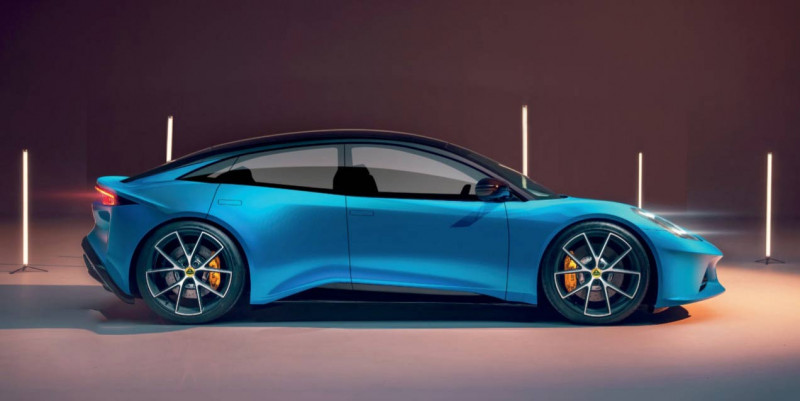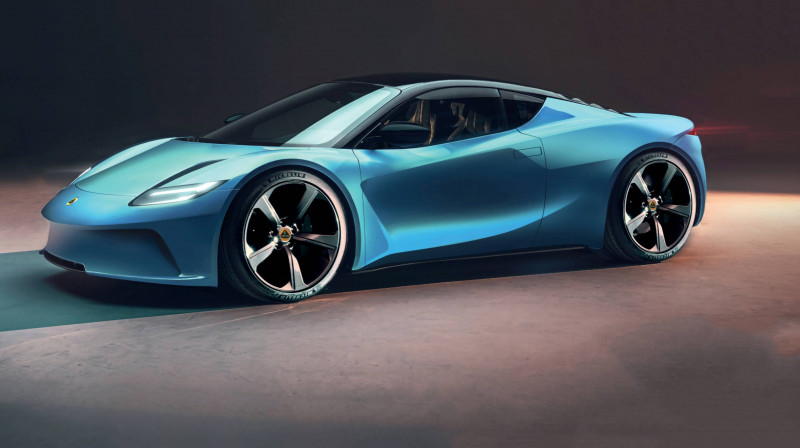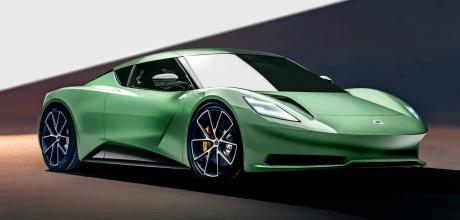Lotus’s EV era Sports cars, four-door coupé, SUVs
Electric Elise successor to crown Lotus’s EV rebirth. New 2026 two-seater will kick-start an electric era of Hethel-developed sports cars.
LOTUS’S BOLD EV PLANS LEAD TO THIS
Lotus is ramping up development of the allnew, pure-electric sports cars that will take the place of the now-retired Elise, Exige and Evora at its UK HQ in Hethel from 2026. As the company prepares to put the 130-run Evija hypercar into production and get the Emira, its final combustion-engined car, into dealerships in the coming months, it has revealed the first details of the E-Sports architecture that underpins its bold plan to electrify all future sports cars.

Less dynamically led EVs like the Type 133will be built in Wuhan
More ‘lifestyle’-oriented EVs, including the Type 132 SUV, Type 133 four-door coupé and Type 134 crossover, will be built at the Lotus Technology HQ in Wuhan, China, from next year. The E-Sports platform has yet to be revealed in its entirety but will be based around a lightweight rear subframe housing batteries and motors, developed by the dedicated Project LEVA (Lightweight Electric Vehicle Architecture) programme.
MD Matt Windle said ‘there is always scope’ for a Lotus model with 872bhp
Said to be 37% lighter than the equivalent structure used by the Emira, it has been designed from the ground up to compensate for the added weight of an electric powertrain and with a view to replicating the typical dynamic traits of previous Lotus models. The batteries can either be stacked vertically behind the seats – in a layout reminiscent of a conventional mid-engined format – or arranged under the floor in longer-wheelbase cars with rear seats.
Its first production application will be as the basis of the Type 135 two-seat sports car, due in 2026 and previewed for the first time recently as part of Lotus’s long-term product strategy announcement. As yet unnamed, the new sports car will effectively serve as the electric successor to the Elise, which recently bowed out after 25 years on sale, by forming the entry point to Lotus’s new-era performance line-up.
The LEVA unit will be mated to a bulkhead and front end completely unrelated to those used by the Emira, but managing director Matt Windle is keen for Lotus’s trademark dynamic agility to be carried over to the new models. “It’s our DNA: dynamics, aerodynamics, light-weighting – that’s what we do on all our products,” he told DrivesToday.

“We still want these to be Lotus products. They are going to have a different propulsion system but that system comes with benefits as well: instant torque, easier cooling and better packaging, so the first sports car [the Type 135] will have a lot of storage and packaging benefits as well.”
The E-Sports architecture will host single- and twin-motor powertrains ranging in output from 469bhp to 872bhp. This means the entry-level sports car will pack nearly double the power of even the most powerful iteration of the Elise, and more powerful versions could fill the gap left by the more track-focused Exige.
The E-Sports platform will accommodate rear- and four-wheel-drive powertrains from the off, although the conceptual applications previewed so far by Lotus all use a rear-mounted drive system. Windle told DrivesToday that Lotus does not “want to close off the possibility” of offering a similar torque-vectoring set-up to that found in the top-rung Evija, which will continue to serve as the brand’s halo model in the coming years in both a marketing and engineering sense. As a result, some of the Evija’s defining features will make their way into more mainstream Lotus sports cars. One early hint is that the EV will be made as aero efficient as possible with aerodynamic aids “running through the car”, in the vein of the Evija’s prominent Venturi tunnels, thereby taking advantage of the more compact nature of an EV drivetrain.
However, the Type 135 will be far more accessible than the hypercar. Windle emphasised Lotus’s commitment to affordable performance and said “efficiencies” throughout the Geely group, which also includes Volvo, Polestar, Lynk&Co and LEVC, will allow Hethel to use components and systems from other brands to keep development and retail costs down.
He said Lotus will struggle to offer the Type 135 at a similar price point to the entry-level Elise but forecasted that a “significant price drop” in the cost of necessary materials and components could enable it to be priced at the upper end of the Exige line-up, which suggests a price of between £80,000 and £100,000.
However, the overarching priority for the Type 135 is to stay true to the company’s long-held reputation for lightweight, accessible performance. Windle said the stacked battery arrangement used for the Type 135 gives “the yaw control and stability that we’re used to setting cars up around” while enabling a “sports car feel”. Notably, Lotus used this arrangement for the first-generation Tesla Roadster, which had a wheelbase only 50mm longer than that of the Elise, on which it was loosely based.
This set-up also allows the driver to sit as close to the ground as possible, like in a petrol-engined Lotus sports car, whereas the underfloor batteries used in larger E-Sports-based cars will raise the seat height – and vehicle profile – by some 100mm.
But Lotus sports cars won’t sacrifice day-to-day usability in their pursuit of dynamic superiority. The smallest battery fitted to this platform will be a 66.4kWh unit, which could feasibly offer a range of around 300 miles in a lightweight, low-slung two-seater (given that sibling brand Polestar’s two-tonne 2 saloon musters 260-273 miles with a similarly sized unit). The larger, 99.6kWh battery – also available in ‘slab’ or ‘chest’ format – could bump up the range to nearer 450 miles. The architecture will also be equipped with 800V charging hardware to make it compatible with the fastest chargers on the market.
Windle was tight-lipped on the specifics of the other cars that will use the E-Sports architecture but emphasised that Lotus UK “should not be a single-model producer” and will build a line-up of distinct sporting models “in multiple segments in the market range”. Not every retired model will necessarily be replaced, but the capacity for the platform to accommodate a rear-driven four-seater with a wheelbase of 2650mm paves the way for an electric successor to the Evora, too.
The Type 135 remains the main priority at Hethel currently, so no details have emerged about any potential larger sports cars, but a post- 2026 launch date for such a model – following the Type 135’s arrival – could enable it to serve as the EV replacement for the Emira, and thus provide a dual focus on dynamism and refinement. As the Emira is available with a choice of V6 and turbo four-pot power, any electric successor would be likely to offer a range of power outputs, and potentially rear- and four-wheel drive.
As for the confirmed maximum output of the E-Sports architecture, Windle said “there is always scope” for a Lotus model with 872bhp – more power than a Lamborghini Sián – but he would not be drawn on what that could look like.
Evija will influence the design and engineering of electric Lotuses. A 2+2 spiritual successor to the Evora is in the frame.
Lotus has revealed first details of vital E-Sports platform. Emira (above) will be last ICE Lotus, Type 135 (left) its fifth EV.
The batteries can be stacked behind the rear seats, replicating a mid-engined layout



The replacement for the Lotus Elise being an EV was always going to upset some, but Lotus boss Matt Windle is confident that the Type 135 will deserve the hallowed emblem. He said: “I know some people won’t like it, but we’ve always been innovative and looked for the best solutions. There’s a lot of references to what Colin Chapman would have made of it. He was pretty agnostic to powertrains; he just wanted the one that gave the best performance, and that’s what we will do. These cars will be fun to drive and will be a premium product which moves Lotus into a different era.”